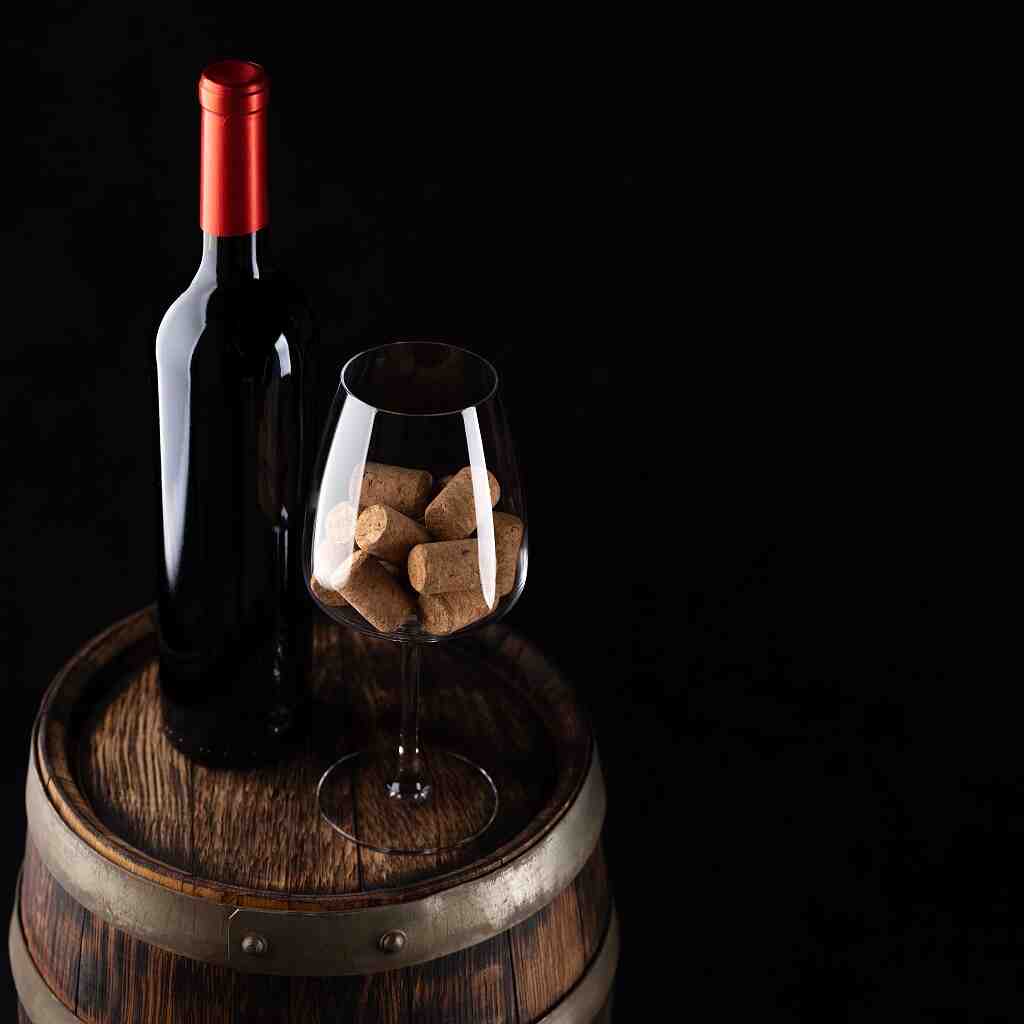Dessert wines are often considered the sweet, luxurious end to a perfect meal. These wines are designed to complement or stand on their own alongside rich, indulgent desserts. Known for their sweet, concentrated flavors, dessert wines are crafted through various winemaking techniques that amplify the natural sweetness of the grapes while maintaining balance and complexity. Whether served with a slice of chocolate cake, a cheese platter, or just sipped on their own, these wines offer a delightful experience. But beyond their sweetness, dessert wines have a rich history and a fascinating array of styles, each with unique characteristics shaped by terroir, grape variety, and winemaking processes.
In this article, we’ll take you on a journey through the fascinating world of dessert wines—exploring their types, how they’re made, and the best ways to enjoy them.
What Are Dessert Wines?
Dessert wines are wines that are sweeter than traditional wines, typically consumed at the end of a meal, often paired with desserts or enjoyed as a stand-alone treat. They are made from grapes with high sugar content, and various techniques are used to preserve the sweetness and create complex flavors. The sweetness in dessert wines comes from naturally occurring sugars in the grapes, which are concentrated through various methods such as late harvesting, drying, or even by allowing the grapes to freeze.
These wines can range from lightly sweet to intensely syrupy, with flavors spanning from fruity to nutty, and sometimes even spicy or floral. The alcohol content in dessert wines can be higher than that of regular table wines, as the sugars in the grapes are fermented into alcohol.
Types of Dessert Wines
The world of dessert wines is vast, with a wide array of styles and origins. Here are some of the most famous and beloved types of dessert wines:
1. Sauternes
Sauternes is one of the most renowned dessert wines, originating from the Bordeaux region of France. This wine is made from a blend of Semillon, Sauvignon Blanc, and Muscadelle grapes that are affected by noble rot (Botrytis cinerea). The fungus attacks the grapes, causing them to shrivel and concentrate their sugars, which leads to highly concentrated flavors and a rich, honeyed sweetness.
Sauternes is known for its complexity, with aromas and flavors of apricot, honey, citrus zest, and exotic fruits, often with hints of vanilla and oak. The balance of sweetness and acidity in Sauternes makes it one of the most sophisticated dessert wines. It pairs beautifully with foie gras, blue cheese, or fruit-based desserts.
2. Port Wine
Port wine is a fortified wine from the Douro Valley in Portugal. It’s known for its rich, full-bodied sweetness, which comes from the addition of grape spirits (aguardente) to the wine before fermentation is complete. This process stops fermentation, preserving the natural sugars in the grapes while raising the alcohol content, typically between 19-22%.
There are several styles of Port wine, with Tawny Port, Ruby Port, and Vintage Port being the most common. Tawny Port is aged in wooden casks, which gives it a nutty, caramelized flavor, while Ruby Port is younger and fruitier. Vintage Port, one of the most prestigious varieties, is made from the best grapes of a single harvest and is known for its rich, deep berry flavors and aging potential.
Port pairs wonderfully with chocolate, nuts, and rich cheeses like Stilton.
3. Ice Wine (Eiswein)
Ice wine, or Eiswein, is a sweet wine made from grapes that have naturally frozen on the vine. It’s mostly associated with Germany and Canada, where the cold temperatures required for this process are common. The frozen grapes are harvested while still frozen, and the ice crystals are separated from the juice. This concentrates the sugars and flavors, resulting in a sweet and aromatic wine with high acidity that balances the sweetness.
Ice wine is typically made from Riesling or Vidal Blanc grapes, and it features flavors of honey, peach, and tropical fruit. It is rich yet refreshing, and its acidity helps keep it from feeling cloying. Ice wine pairs excellently with light fruit-based desserts, foie gras, or simply enjoyed on its own.
4. Tokaji (Tokay)
Tokaji is a famous Hungarian dessert wine made from the Furmint grape, often affected by noble rot, similar to Sauternes. The most famous style of Tokaji is Tokaji Aszú, which is made by blending the botrytized grapes with wine that hasn’t been affected by the fungus. Tokaji is typically labeled by the number of puttonyos (which refers to the level of sweetness and concentration), with a higher puttonyos indicating a sweeter, more concentrated wine.
Tokaji has a rich, honeyed sweetness with notes of apricot, orange peel, and spices, often with a slightly nutty undertone. Its acidity helps balance the sweetness, and it can age beautifully, developing more complexity over time. Tokaji pairs well with foie gras, spicy dishes, and desserts featuring citrus or nuts.
5. Madeira
Madeira is a fortified wine from the Portuguese island of Madeira, and it’s known for its remarkable aging potential. The wine undergoes a unique aging process where it is exposed to heat and oxygen, which results in a complex, nutty, and caramelized flavor profile. Madeira comes in a range of styles, from dry to sweet, with the sweet styles (such as Malvasia and Bual) being most commonly used as dessert wines.
Madeira has a rich, deep flavor with notes of dried fruit, nuts, caramel, and spices. The aging process gives it an oxidative quality that makes it incredibly resilient, and it can last for decades. It pairs well with rich desserts, nuts, and even savory dishes like smoked meats.
6. Moscato d’Asti
Moscato d’Asti is a sweet, lightly sparkling wine from the Piedmont region of Italy, made from the Muscat grape. This wine is known for its low alcohol content (usually around 5-6%) and its lively, aromatic profile. It has fragrant notes of peaches, citrus, and flowers, with a light fizz that adds a refreshing quality.
Moscato d’Asti is perfect for those who prefer a lighter, less intense dessert wine. It pairs well with fresh fruit, light pastries, and cheesecake, or can simply be enjoyed on its own as an aperitif.
How Dessert Wines Are Made
The process of making dessert wines is varied and unique, depending on the type of wine being produced. Here are a few common winemaking techniques:
- Late Harvesting: Grapes are left on the vine longer than usual, allowing them to become overripe and accumulate higher sugar content. The longer the grapes stay on the vine, the sweeter and more concentrated they become.
- Noble Rot: The noble rot, or Botrytis cinerea, is a fungus that shrivels the grapes, concentrating their sugars and acids. This process adds complexity to the flavors, resulting in wines with honeyed, fruity, and sometimes earthy characteristics.
- Fortification: In wines like Port and Madeira, fermentation is stopped by adding grape spirits, which preserves the natural sweetness of the grapes and increases the alcohol content. This technique gives the wine its signature richness and intensity.
- Freezing: In the case of ice wine, the grapes are left on the vine until they freeze, and then harvested while still frozen. The frozen grapes are pressed, separating the water (ice crystals) from the concentrated juice, which creates a sweet, high-acid wine.
How to Enjoy Dessert Wines
Dessert wines are best enjoyed when served slightly chilled, although the exact temperature can depend on the style of wine. Lighter dessert wines like Moscato d’Asti should be served cooler, while richer wines like Port or Sauternes are better at slightly warmer temperatures to allow their complex aromas and flavors to open up.
When pairing dessert wines, it’s important to ensure that the wine is as sweet, or sweeter, than the dessert itself. Pairing a dessert wine with a dessert that is too sweet can cause the wine to taste overly tart, so choose desserts with a balance of sweetness that complements the wine.
Some great pairings include:
- Sauternes with crème brûlée or fruit tarts.
- Port with chocolate desserts or blue cheese.
- Ice wine with fruit-based desserts or foie gras.
- Madeira with nut-based desserts or caramel flans.
- Moscato d’Asti with fruit salads or light pastries.
Conclusion
The world of dessert wines is rich, diverse, and full of indulgent delights. From the honeyed sweetness of Sauternes to the fruity effervescence of Moscato d’Asti, each style offers its own unique experience. These wines are crafted with care, using ancient techniques that highlight the natural sweetness of the grapes while adding complexity and balance. Whether you’re savoring a glass after a meal or pairing it with a decadent dessert, dessert wines are the perfect way to end a special occasion. So, next time you’re in the mood for something sweet, reach for a bottle of dessert wine and let its flavors transport you to another world of indulgence.










